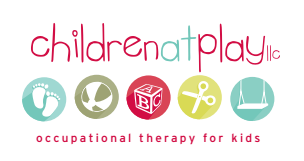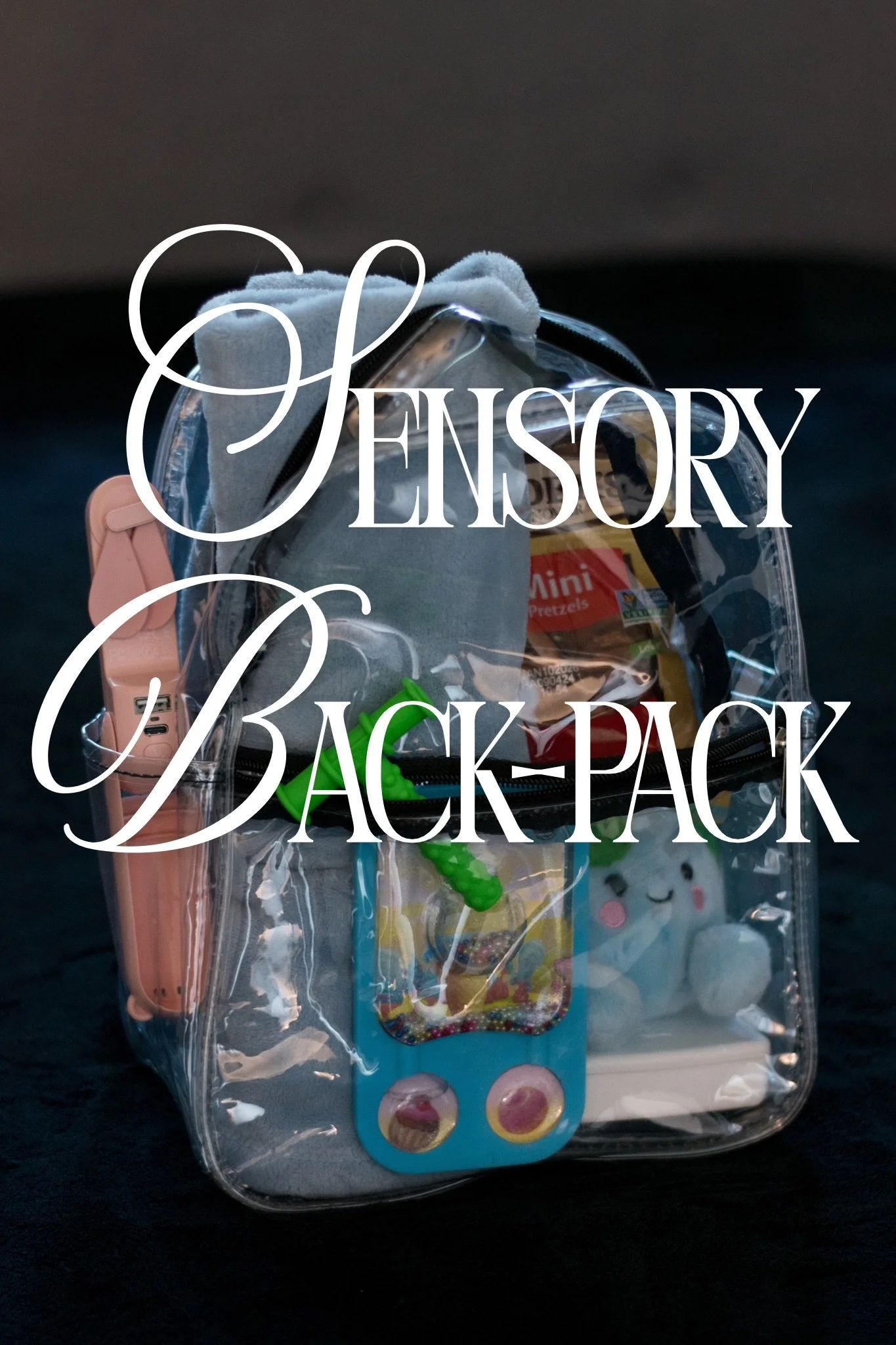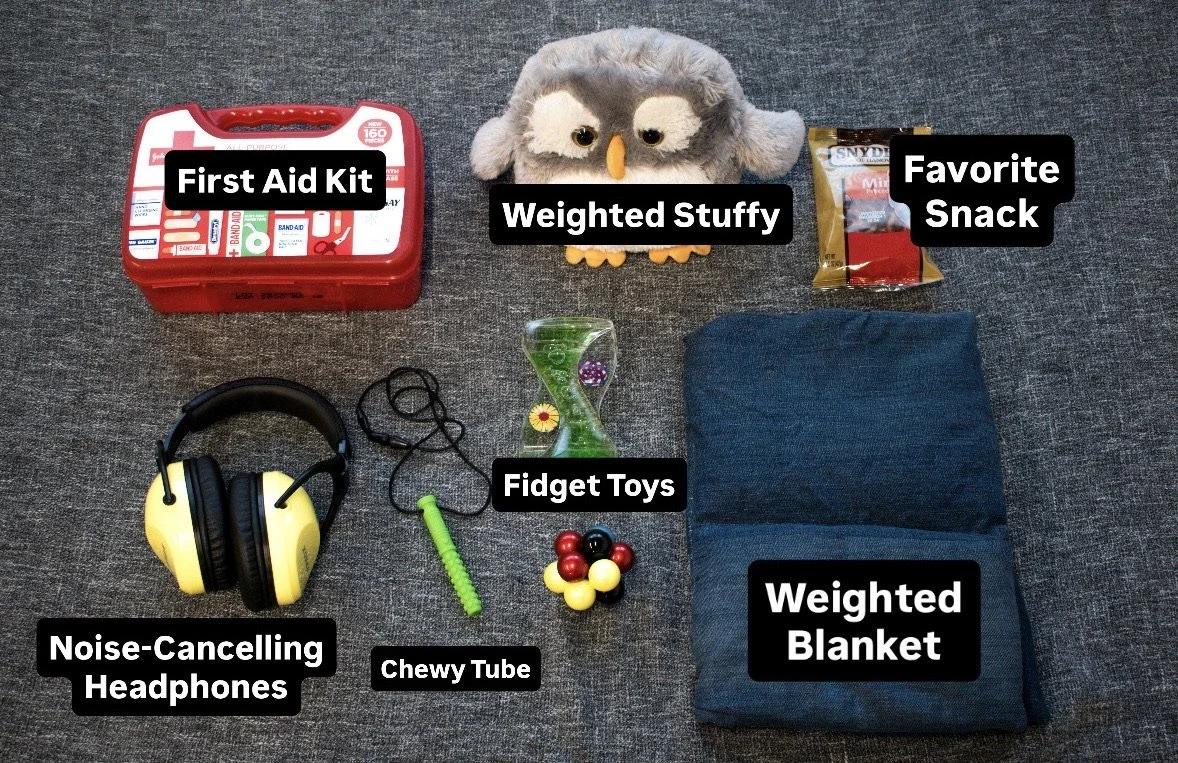Tips for Traveling with Neurodivergent Children
For families with neurodivergent children, traveling can present unique challenges. With thoughtful planning and preparation, you can make the experience smoother and more enjoyable for everyone. This guide offers tips for parents when traveling with neurodivergent children, covering travel by plane and car, as well as general planning.
General Trip Planning
Involve Your Child:
If possible, involve your child in the planning process. This could include letting them choose some activities or stops along the way. Whatever you choose, the goal is to help your child feel more invested in the trip.
Practice Traveling
Practicing travel routines can also be beneficial. If possible, simulate aspects of travel at home.
Watch videos and look up pictures of where you’ll be going and what you’ll be doing.
Discuss the trip with your child in a positive and clear tone, using visual aids to help them understand the plans.
Choose Sensory-Friendly Destinations:
Look for places known for their sensory-friendly environments. Many attractions now offer sensory spaces, quiet hours, and "flash passes" to help visitors avoid long waits.
Prepare for Transitions:
Help your child understand the process by creating a social story with pictures of the transportation, stops, and the destination.
Use a calendar to count down the days until the trip visually.
If you already have a family calendar, you can try adding a marker that visualizes the trip, like an airplane, that the child moves each day to count down to the trip.
Use Pre-Visit Resources:
Take advantage of resources like maps, visual schedules, and social stories provided by many venues to prepare your child for what to expect.
The IBCCES Accessibility Card and the Disability Access Service (DAS) at theme parks can also help with requesting accommodations.
Plan for downtime:
Create a flexible itinerary with plenty of downtime to prevent sensory overload.
If possible, when you arrive, provide a quiet, low-demand space that your child can access to utilize when they feel overwhelmed during the trip.
Packing Essentials
Prepare a Comfort/Sensory Kit:
Pack a bag with items that provide comfort and a sense of calm. This could include a weighted blanket, noise-canceling headphones, a sleep mask, favorite fidget toys, preferred snacks, tactile toys, and a visual schedule of the trip.
If you plan on trying a new comfort item, such as headphones for the trip, we recommend that you introduce them to the child a few weeks before the trip, if possible.
Health and Food:
Always pack medications, a first-aid kit, and a familiar snack where they are accessible during travel.
If your child is brand or flavor specific for over-the-counter medication, you may want to pack their preferred type of a few basic
Identification:
Consider an ID bracelet, a kid’s communication device, such as a gizmo, Bark phone, or GPS tracker for added safety.
Traveling by Plane
Flying can be overwhelming due to crowds, noise, and the many transitions involved. When possible, book flights during off-peak hours to avoid the busiest times. To ease the journey, consider utilizing these offered airport accommodations:
Airport Accommodations:
Inform the airline in advance about your child's needs. Many airlines offer accommodations like early or priority boarding and specific seating assignments. Consider applying for TSA Precheck, and for additional support, you can call a TSA Passenger Support Specialist at least 72 hours before your flight to assist with navigating security.
https://www.youtube.com/watch?v=IqYHtL6AUYM
Consider getting a TSA Disabilities Notification Card
https://www.tsa.gov/travel/tsa-cares/disabilities-and-medical-conditions
The Hidden Disabilities Sunflower Program is also a great option, as wearing a sunflower lanyard discreetly signals to airport staff that a traveler may need extra time or assistance.
The Sunflower symbol doesn’t focus on the invisible; it triggers a simple question ‘How can I help you?’ to focus on the support or understanding you need. By wearing the Sunflower, you’re letting everyone know that you might need extra help, understanding, or more time.
https://hdsunflower.com/
Tips when Traveling by Car
Road trips offer more control and flexibility, but they still require careful planning.
Plan the Route:
Research the journey to find rest stops and attractions that cater to your child's interests and needs.
Break up the drive into manageable segments with frequent stops for sensory breaks.
Try to use stops for sensory breaks, running if there's space, try to search for playgrounds and parks on the route for climbing and swinging.
Accommodation Checks:
When booking overnight stays, call ahead to verify if they offer autism-friendly environments or specific accommodations.
Some kid-focused places have extra accommodations, while others have extra over-stimulation. Consider asking about the volume in the lobby and kids’ attractions.
Recognizing Sensory Overload and Autistic Burnout
Understanding the signs of distress is crucial for a successful trip.
Signs of Sensory Overload:
Watch for irritability, difficulty concentrating, changes in speech, increased stimming, or a desire to withdraw.
Signs of Autistic Burnout:
This can manifest as extreme fatigue, lack of motivation, memory loss, and social exhaustion. If your child is experiencing burnout, provide a quiet, low-demand environment. Allow for rest and extra time with their special interests. Offer reassurance and be patient.
These tips are a collection of advice from our occupational therapists and parents of neurodivergent children. Different tips will work for different children and different trips. Please use this more as a menu than a checklist, deciding what could work for your child, family, and each unique special family adventure.



